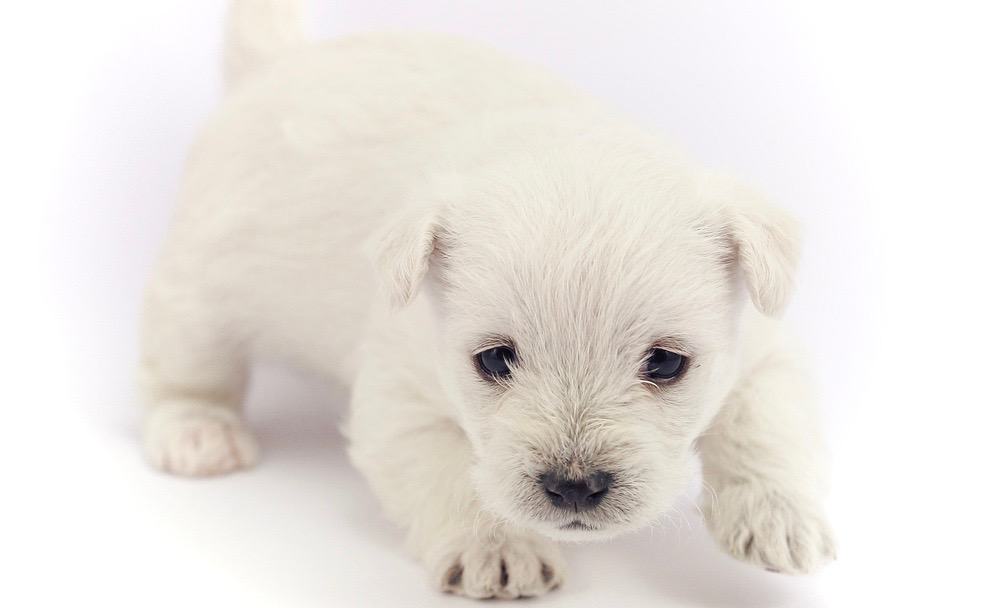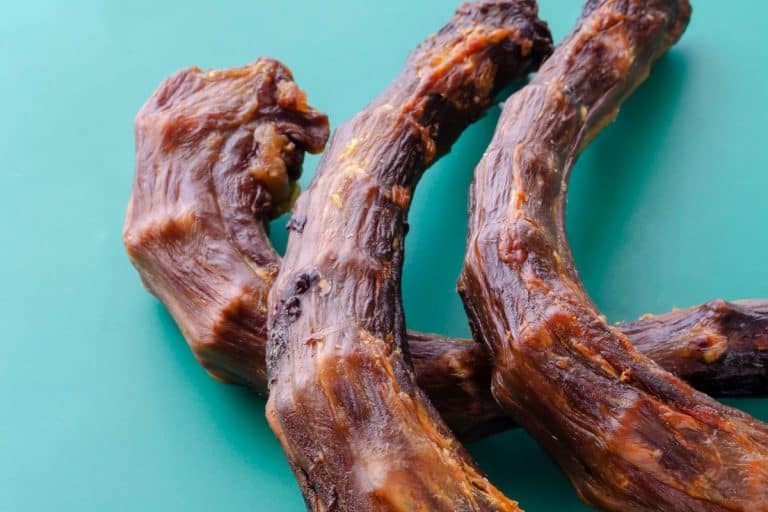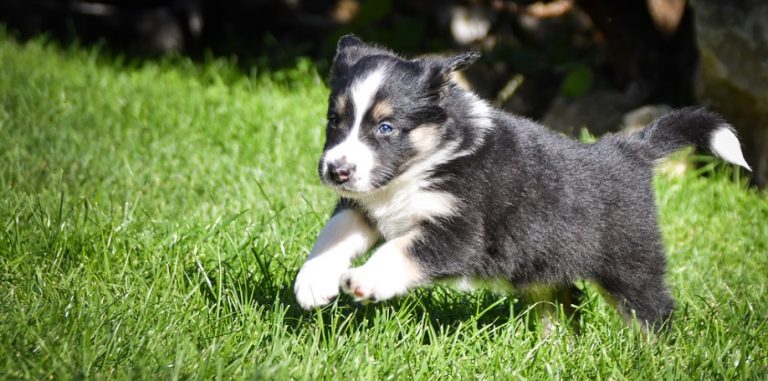Shorkie Weight Chart – Size & Growth Chart
With their combination of loyalty, dedication, and an adorable face, it is easy to see why anyone would be drawn to adopting a Shorkie puppy.
Whether you have already adopted one or are just considering it, you will need to consult with a Shorkie growth chart in order to know whether your Shorkie is on the right track as far as growing goes.
With smaller breeds, weight discrepancies that would be negligible on a large dog can become dangerous or concerning with a Shorkie.
Understanding how they should grow is only one part of things, however. Here is what you should know.
When Is A Shorkie Fully Grown?

When you are looking at a Shorkie growth chart, it might not be clear when your Shorkie should be done growing.
Since it is a smaller dog, the breed should be done growing at a much younger age than a large breed would be.
Where a large breed can continue to grow up to 18 months, a Shorkie should be done growing at around 9 months.
This is a mixed breed, however, so your dog could continue to grow even beyond the 9-month mark. As long as he is growing on his own growth curve, you should have nothing to worry about.
Shorkie Weight Chart
Looking at a Shorkie weight chart only works if you understand how to read it.
Weight charts can give you an idea about where your dog is as far as average weights go and can provide insight into how large your dog might be when he is fully grown.
When you look at the Shorkie size chart, you will see that there is generally a difference in size between the male and female dogs, with the female Shorkie being smaller than the male.
When a Shorkie is fully grown, you can see that there is a pretty big range in size, with males weighing between 5 and 11 pounds and females weighing between 4 and 8 pounds.
Because Shorkies are a mixed breed between Shih Tzu and Yorkshire Terriers, so depending on the generation of dog that you get or whether the Yorkshire Terrier or Shih Tzu is dominant in the mixture, your Shorkie may be bigger or smaller.
It is really important to note that weight charts are based on average sizes, so if your pup doesn’t quite fit into it, there is no reason to worry.
As long as your dog grows consistently, he may still be a healthy weight.
Shorkie Puppy Weight Chart
| Male Shorkie | Female Shorkie | |
|---|---|---|
| Weight (lbs) | 5 - 11 lbs | 4 - 8 lbs |
| Weight (kg) | 2.3 - 5 kg | 1.8 - 3.6 kg |
| Height | 6 - 9 inch | 5 - 8 inch |
Shorkie Growth Chart – What To Expect

Birth – 2 Weeks
Shorkies are not very large at birth, weighing mere ounces. They will be completely reliant on their mothers at this point and will not open their eyes until about 2 weeks old.
They should not be fed anything beyond mother’s milk and will not stray. They do grow some in between birth and 2 weeks, but it is not a substantial amount as the breed does not get very large when fully grown.
3 Weeks – 12 Weeks
There is not a lot of difference between a 2-week old Shorkie and a 3-week old Shorkie, but there is a big difference between a 3-week old Shorkie and a 12-week old Shorkie.
Ideally, a Shorkie should be kept with his mother as long as possible. They might even drink mother’s milk up until 12 weeks of age if they have access to their mother. Most puppies will be rehomed at 8 weeks.
4 Months – 9 Months
When we are talking about a Shorkie puppy that is between 4 and 9 months old, we would like you to remember that some Shorkies weigh as little as 4 pounds fully grown.
At 4 months, your Shorkie will still not be a very large or heavy dog, but he should be at his final height when he is 9 months old. He might need until 12 months to reach his adult weight.
10 Months – 18 Month
Your Shorkie puppy should be done growing when he is 10 months old, but it is possible for him to gain a little bit of weight.
Since they are such small dogs, the amount of weight that they will gain might be negligible in the scheme of things. They are not prone to obesity but don’t encourage your pup to gain more weight than is necessary.

Adult
When a Shorkie reaches his adult weight, he should remain at that weight for the rest of his life. This breed is really consistent with their weights, so there should not be any sudden surprises.
They will stay at their adorable, small dog-size size all of the way to old age. It is safe to assume that once your dog stops growing, he will be completely done growing forever.
How Big Do Shorkies Get?
As Shorkies are a mixed breed, it is not as simple to know the breed and assume what their final weight will be.
You can consult with a weight chart to get some kind of idea as to the final weight your dog will be, but it is not the only way.
The best way actually is to look at the puppy’s parents. If you can see the puppy’s parents, you can get an idea of how large your puppy will be.
You can have a DNA test done if you don’t know who the puppy’s parents are. That way, you will be able to see exactly how much Shih Tzu and Yorkshire Terrier is in your Shorkie since the breeds are not the same size.
Paw size is a method to determine how much your puppy needs to grow in order to grow into his paws, but that isn’t as easy to determine on a small dog breed.
Will Neutering/Spaying My Shorkie Affect His Growth?
Spaying or neutering your dog is the best way to prevent unwanted pregnancy. It can help keep your dog from running off to find a mate, putting themselves in danger. Spaying can also prevent certain types of cancer.
In previous years, we had followed the guidance of spaying and neutering your pup as soon as possible.
This is no longer the go-to logic. Instead, it has been recommended that you wait until your dog has reached maturity and then have your dog fixed.
The reasoning is that dogs that are fixed too young can have joint issues as they age with the loss of hormones too young. It does not seem to affect small breeds, like Shorkies, however, so ask your vet for her suggestion.
Shorkie Height Chart
As we mentioned above, male Shorkies are generally larger than female Shorkies. This counts as far as weight goes, but it also counts in their height. On average, an adult Shorkie will be between 5 and 9 inches tall.
To measure your dog’s height, you will need to use a tape measure. With your dog standing up, measure the distance from your dog’s shoulder to the floor.

Since a Shorkie is a mixture between a Shih Tzu and a Yorkshire Terrier, they might be slightly bigger or smaller than the average, depending on which breed is dominant within your Shorkie.
It is also important to remember that your dog may not fit within the Shorkie growth chart as the chart is based on averages.
Morkie vs Shorkie Size
A Shorkie might be a combination between a Shih Tzu and a Yorkshire Terrier, but a Morkie is a cross between a Maltese and a Yorkshire Terrier.
Even though they are both smaller dogs and both contain Yorkshire Terrier, they are not the same breed.
The average weight of both breeds is 10 pounds, so they are about the same size. The range for a Shorkie is between 4 and 11 pounds while a Morkie is between 7 and 13 pounds, making the Morkie slightly heavier.
Height-wise, the Shorkie stands taller with an average height around 9 inches, while the Morkie is about 7 inches tall.
The size difference between a Shorkie and a Morkie is so slight that it is easier to just assume that the breeds are the same size.
Shorkies come in a wider variety of colors while Morkies can only be black, brown, and white.
Factors That Affect Shorkie Growth

Genetics & Gender
One of the biggest factors that will determine and affect your Shorkie’s growth is genetics. This is so crucial with Shorkies, because they are a mixed breed, so they may have more of one type of dog than another.
Gender will also come into play, because males are typically larger than females, so you will get another idea of what to expect as far as adult size goes.
Nutrition
It is always important to ensure that your puppy is eating as well as he should be eating. Since Shorkie’s are prone to dental issues, nutrition is so essential to their overall development.
If they cannot eat well, then they will not grow as well as they should. It may not stunt their growth as far as bones go, but they might not be able to eat as well as they should to grow properly.
Physical Activity & Health
Shorkies are not the most energetic dogs out there, but they still need physical activity to be healthy. If you overdo it with physical activity, however, you could harm your puppy’s development.
Keeping your dog at the right weight, not too thin or too overweight, will help him grow consistently and well, helping to build a bright and healthy future for him.
It is possible to overwork a dog so that he will not grow as large as he should be.
What If My Shorkie Is Not The Right Weight
If you are looking at a Shorkie weight chart and then looking at your dog’s weight and see there is a big difference between the two, you might be concerned.
We only want the best for our dogs so if they are not the right weight, we might be more likely to panic or be concerned. But there might not be a cause for concern.
If your puppy is underweight compared to a weight chart, the first thing to ask is whether your puppy has always been small. If your puppy has always been low on the weight chart, then he will continue to be so.
The big concern is if your puppy has lost weight or if he is not growing as quickly as he once did.
If this seems to be the case, it is time to give your vet a call and find out what you should do to help your dog out.
Shorkie Genetics And Common Health Problems
While all breeds are prone to health problems, since Shorkies are a mixed breed, their genetic conditions are not as severe as other dog breeds are.
The primary issue that Shorkies have to deal with are dental issues. They are more likely to suffer tooth loss or oral injury than they are to develop any other kind of health condition.
That said, they can develop more severe health issues, though they are less common. The first is hypoglycemia, which is low blood sugar.
That is a common issue with smaller dogs and can be dealt with by regular feedings.
The dogs can also develop liver disease or a collapsed trachea. These are both serious of course, but not incredibly commonplace.
They are also less likely to develop in youth, but might come up as the dog ages.
Finally, Shorkies can suffer from patellar luxation, which is a kneecap issue that might cause pain. Preventative care might be able to help you here.
Final Words
Shorkies are such sweet dogs that when you adopt one, you will never regret it. But, as a good dog owner, you will need to know what it means to be growing well.
Consulting with our puppy weight chart will help you understand how big your puppy should be growing and at what speed.
Of course, you will need to know that weight charts are only based on averages, so your dog might not be on this weight chart at all.
As long as your puppy grows at a consistent rate, you do not need to worry if your puppy isn’t as big as other puppies.






